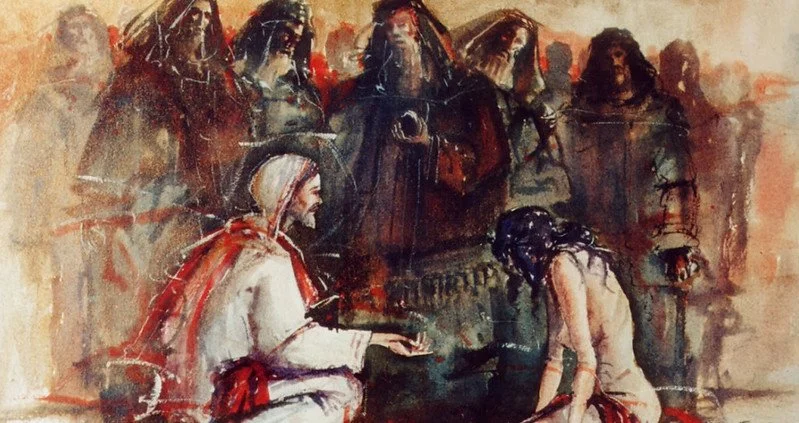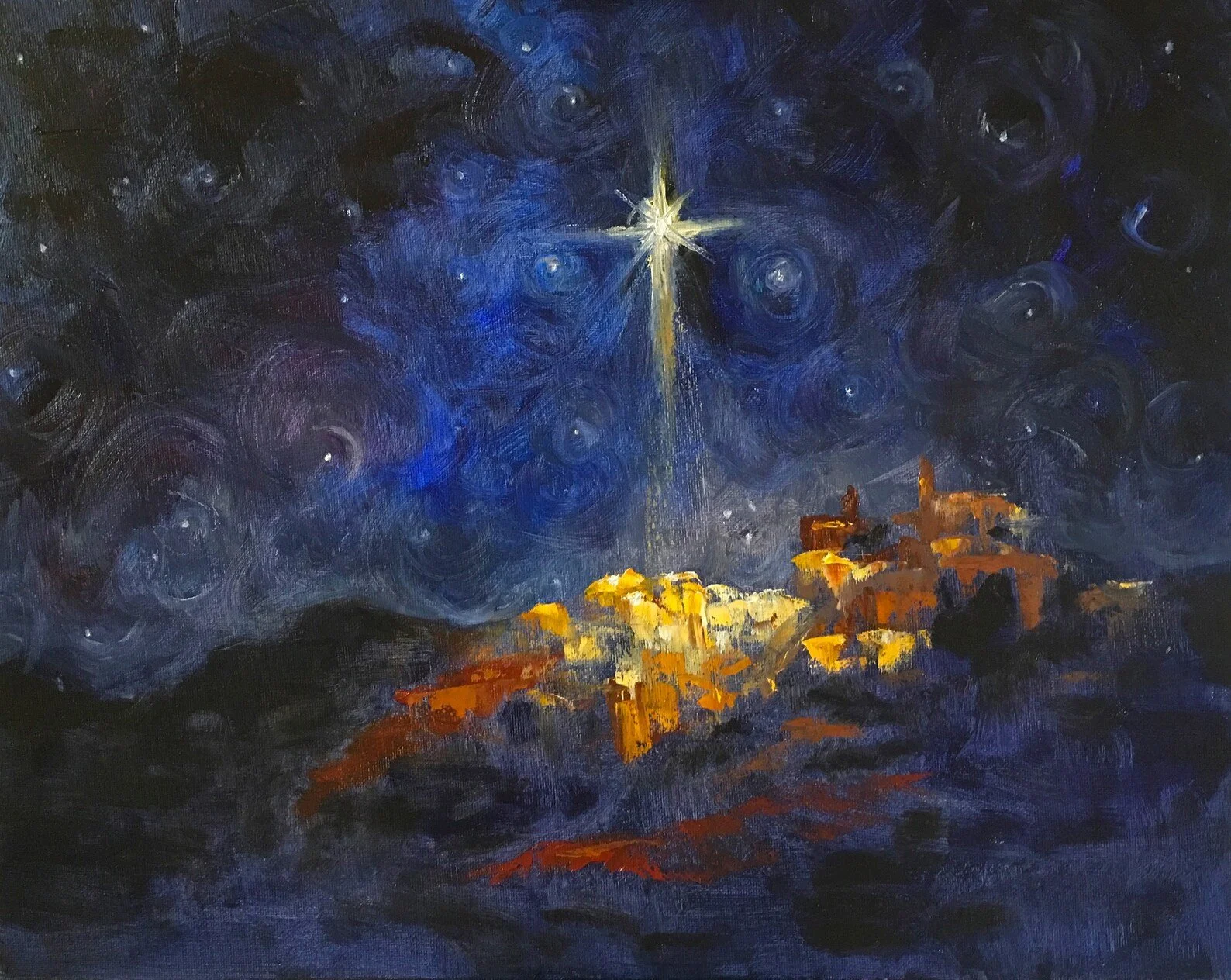"When The Glory of God Goes Low" : An Advent Reflection
One of the main themes in the Bible is that of God’s glory.
God’s glory is his weight. His importance. It’s his beauty, his splendor, his majestic bright goodness. God’s glory is his weighty character. The shining essence of who He is.
God’s glory is a big deal. And every now and then God’s people got a little glimpse of it. But the prophets spoke of a day when God’s glory would finally be revealed to all.
Here is what we read in the opening verses of Isaiah 40:
“A voice of one calling:
“In the wilderness prepare
the way for the Lord;
make straight in the desert
a highway for our God.
Every valley shall be raised up,
every mountain and hill made low;
the rough ground shall become level,
the rugged places a plain.
And the glory of the Lord will be revealed,
and all people will see it together.
For the mouth of the Lord has spoken.”
I imagine Jesus’ Jewish contemporaries had some ideas about what that glory might look like.
After all, they grew up on the stories of their ancestors. The parting of the Red Sea. Manna falling from heaven. Their delivery from slavery that required ten other-worldly plagues. Times in which God’s glory showed up in ways that could only be described as divine activity.
And so when Jesus began his public ministry he did some things that would have alerted his peers: Healing the sick. The blind able to see. The lame able to walk. The calming of the storm. Walking on water. The dead raised to life!
If God’s glory was indeed going to be revealed to all people, surely this is what it would look like, right? Miracles. Healings. Signs. It’s heaven come to earth!
And it was.
All of those things were part of God’s glory being revealed.
In 2 Corinthians 4 we read that Jesus is “the image of God…. For God, who said, ‘Let light shine out of darkness,’ made his light shine in our hearts to give us the light of the knowledge of God’s glory displayed in the face of Christ.”
In Hebrews 1 verse 3 we read “The Son is the radiance of God’s glory and the exact representation of his being…”
Jesus affirms this himself when he says things like “Whoever has seen me has seen the Father.”
These truths help us make sense of the miraculous signs and miracles. They were like a beacon for those awaiting the glory of God to be put on display in the one who was to come. They are precisely the kind of things one would expect.
What people seemed very unprepared for, however, was not so much the big ways in which Jesus put on display the glory of God, but the small ways. It was the things that tripped people up precisely because it wasn’t the way one would expect the “radiance of God’s glory” to show up and behave.
Most didn’t seem to have a category for what it looks like when God’s glory goes low.
Let’s consider a few striking examples of what I mean:
Jesus’ family tree is marked by lowliness.
And not only is this not swept under the rug by God, it is highlighted to make sure we don’t miss it.
The gospel of Matthew begins with a part you may have skipped over. It begins by laying out for us Jesus’ genealogy. Like most all genealogies in Jesus’ day, it is a patrilineal genealogy listing fathers and sons. Women were not included in these.
This isn’t all that surprising considering the ways in which women were treated in the ancient near East. Women couldn’t vote. They couldn’t testify in court. They weren’t typically educated or allowed to work outside the home. They enjoyed no power or status. They weren’t counted at census time and they weren’t included in genealogies.
That much isn’t surprising. What is surprising is that Jesus’s genealogy includes not one, not two, not three, not four, but five women! This in and of itself is shocking and worth sitting in for a while.
What’s even more shocking, however, is the kind of women who are included.
The first is Tamar. She is best known for dressing up as a prostitute and seducing her father in law so she could have kids of her own. And that’s exactly what happened.
The second is Rahab. She didn’t need to pose as a prostitute because she actually was one. Even worse than that (at least in the eyes of Matthew’s Jewish contemporaries) was that she wasn’t even Jewish. She was a Gentile! And a Canaanite, no less! Yet after hiding the Jewish spies her life is spared, she marries a Jewish man and becomes King David’s great, great grandmother.
The third is Ruth. She, too, was a Gentile. Her ancestry had at its origin the incest between Lot and one of his daughters. Her people, the Moabites, were polytheistic pagans who were known to practice human sacrifice to false gods like Chemosh. It’s only through personal tragedy that she ends up in the arms of Boaz and is grafted into the Messiah’s bloodline.
The fourth is Bathsheba. Her and David’s story rank as one of the most scandalous and devastating stories in the entire bible. She is listed here as an ancestor of Jesus. And how did she become an ancestor of Jesus? By suffering sexual abuse and the murder of her husband at the hands of Israel’s greatest king.
The fifth woman included in the genealogy of Jesus is his mother Mary, a peasant teenager who was impregnated before she was married - a reputation that no doubt followed her and Jesus throughout their lifetimes.
And what do all of these women have in common? Each of them experienced disgrace. They had tainted reputations. They endured the contempt of others. And yet they are chosen by God to be included here in the very first words of the New Testament in Jesus’ own genealogy.
What is going on here?
This is what it looks like when the glory of God goes low.
It’s as if before Jesus is even born, before we hear a word about the events that took place on Christmas night, God wants us to know something profound. About his character. About his grace. About the nature of his kingdom. And who it includes.
2. We see the mystery of God’s glory going low in the birth event itself.
The Jewish people expected a mighty military leader to be the one who was to come. Someone who could give them their land back by force.
When they heard ‘kingdom,’ they thought earthly kingdom. When they heard ‘king,’ they thought earthly king.
But when the glory of God shows up on Christmas night, he doesn’t come as an earthly king, or a mighty military leader. He doesn’t come adorned with jewels or power. He isn’t born in a major city or into a major family.
He is born into the humblest of circumstances.
He is born into poverty – a common family tasked with the common struggle of putting food on the table under Roman oppression.
He comes to us as a vulnerable child - entirely dependent on his teenage mother to care for him.
He is born not in a palace or even a bedroom. He’s born in a stable amidst animal sounds and animal smells. He’s laid in a feeding trough – amidst whatever animal saliva and half chewed food remained. He was wrapped in whatever cloths happened to be available that night.
This is what it looks like when God’s glory goes low.
3. And how about those to whom the birth event is first announced?
Not kings or dignitaries. Not politicians or priests.
Shepherds.
A marginal group who live in a gypsy encampment outside Bethlehem, they are a shunned minority. Their profession prevents them from being able to participate in ceremonial washings and so they are considered unclean. Because they are uneducated in the Law they are considered ignorant. Because they are without roots in the community, they are considered suspect.
And while the religious authorities may led them to believe they have no place in the temple, God has seen fit to make sure they have a front row seat to the birth of his son.
Honored guests of the Most High: the unclean, the ignorant, the suspect.
This is what it looks like when God’s glory goes low.
And while all of this should amaze us, it shouldn’t surprise us.
We see this same kind of glory put on display throughout Jesus’ life and ministry.
We see it when Jesus violates religious law to touch a leper.
We see it when he allows women of ill repute to bathe his feet with their tears.
We see it when he breaks from religious tradition to heal the afflicted on the Sabbath.
We see it when he spends so much time eating and drinking with known sinners that he gains a reputation for being a glutton and a drunkard, a friend of tax collectors and sinners.
We see it when Jesus stops an angry mob from stoning a woman caught in adultery. What does the radiance of God’s glory look like in that moment? It’s not wielding stones of condemnation. No, it’s in the dirt with the guilty. It’s bent down between the accused and her accusers.
We see it all the way to the cross where God’s own son, the second person of the trinity, “the radiance of God’s glory,” willingly lays down his life for a bunch of misfit rebels who couldn’t deserve it less.
What is that?
That’s what it looks like when God’s glory refuses to stay suspended somewhere in the heavens.
It’s what it looks like when God’s glory takes on flesh and moves into the neighborhood.
It’s what it looks like when God’s glory goes low.
To which, what else can we say but those ancient and eternal words penned by the Apostle Paul: “Praise God! To him be glory in the church and in Christ Jesus throughout all generations, for ever and ever! Amen!”


